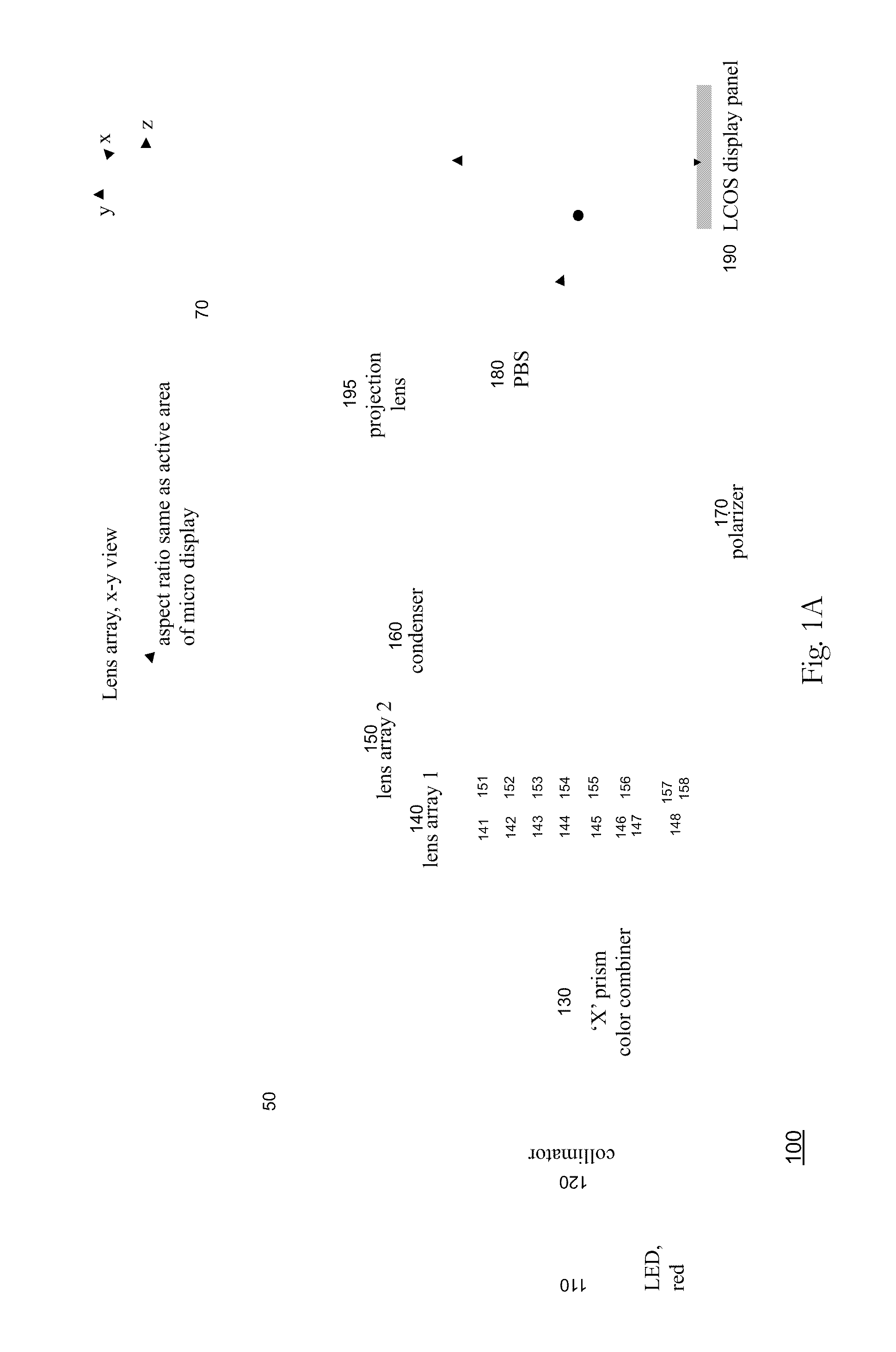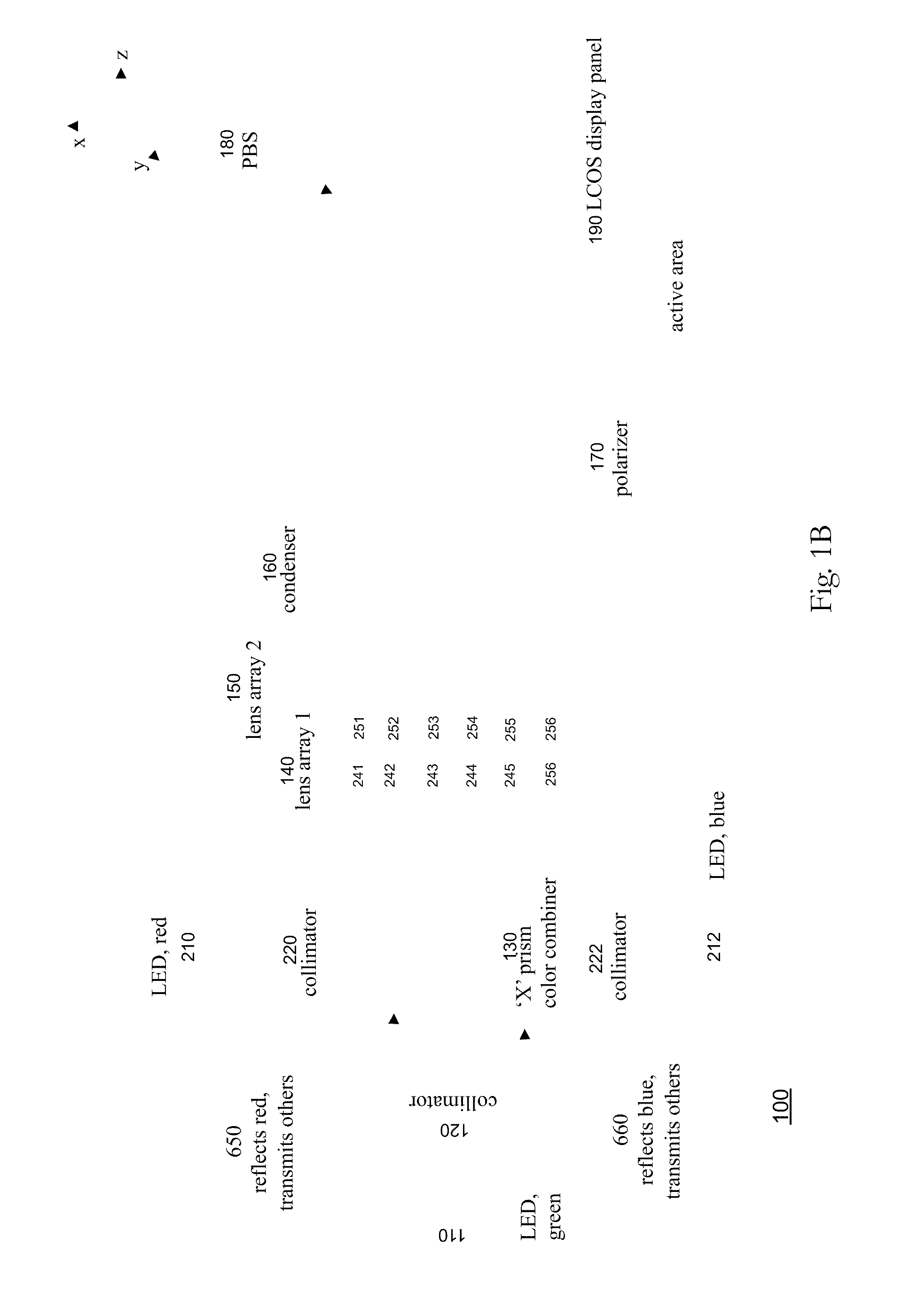Systems and methods for handheld projection displays
- Summary
- Abstract
- Description
- Claims
- Application Information
AI Technical Summary
Benefits of technology
Problems solved by technology
Method used
Image
Examples
first embodiment
[0026]Referring now FIG. 1A, there is shown a structural diagram of Y-Z view in a handheld projection system 100 employing a LCOS display panel 190. The term “LCOS display panel” is used interchangeably with “LCOS microdisplay”, or referring to a LCOS chip. The handheld projection system 100 generally can be viewed as comprising two main sections: illumination optics 50 and projection optics 70. A light emitting diode (LED) 110 projects a light signal that is collimated by a collimator 120 into a relatively narrow diverging cone toward an X-prism color combiner 130 (also referring to as a prism plate color combiner). The light emitting diode 110 is of red color. The X-prism color combiner 130 transmits the red color light to a first lens array 140.
[0027]The first lens array 140 includes a plurality of lenslets in a two-dimensional array. Lenslet 141, 142, 143, 144, 145, 146, 147 and 148 are examples. A second lens array 150 includes a plurality of lenslets in a two-dimensional array...
second embodiment
[0052]In FIG. 2, there is shown a structural diagram illustrating a handheld projection system 200 employing a pair of LCOS display panels for recapturing the lost polarization. FIG. 2 is a Y-Z view in which the red and blue LEDs are not shown. As can be observed in FIGS. 1A and 1B, half of the light from the light source is lost if the light source is non-polarized. The handheld projection system 300 adds a second LCOS display panel 310 to recapture the lost polarization, thereby increasing the brightness of an image. In an alternative embodiment, a polarization converter can be used instead of the second LCOS display panel 310, when Etendue of the light source is less than the Etendue of the display panel. Etendue is typically the product of the source (or display) area and the solid angle of emitting cone (or acceptance cone of the display panel). A polarization conversion system as illustrated in FIG. 7A can be inserted between the condenser and the PBS to increase illumination ...
third embodiment
[0053]As shown in FIG. 3, there is a structural diagram illustrating a handheld projection system 300 employing a LCOS display panel with a field lens 410. The field lens 410 is placed between the polarization beam splitter 180 and the LCOS display panel 190, in close proximity to the display panel 190. The advantage of using the field lens 410 as shown is that it simplifies the optics in the condenser 160 as well as reducing the size of the condenser 160. In a first order approximation, the focal length of the field lens 410 should be equal to the focal length of the condenser 160.
PUM
 Login to View More
Login to View More Abstract
Description
Claims
Application Information
 Login to View More
Login to View More - R&D
- Intellectual Property
- Life Sciences
- Materials
- Tech Scout
- Unparalleled Data Quality
- Higher Quality Content
- 60% Fewer Hallucinations
Browse by: Latest US Patents, China's latest patents, Technical Efficacy Thesaurus, Application Domain, Technology Topic, Popular Technical Reports.
© 2025 PatSnap. All rights reserved.Legal|Privacy policy|Modern Slavery Act Transparency Statement|Sitemap|About US| Contact US: help@patsnap.com



